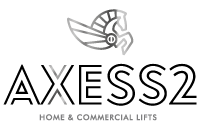Today, business owners and facility managers are confronted with mounting pressure to prioritise building accessibility in the current business environment. This pressure stems from two primary factors: adherence to legislative requirements and the escalating public demand.
Why Going Beyond Legal Obligations Makes Business Sense
The enactment of the Equality Act in 2010 established a crucial legal framework to address disadvantage and discrimination. The Act aimed to ensure that disabled workers and job applicants would not face any form of disadvantage. Treating individuals with disabilities unfavourably, including customers, suppliers, or meeting delegates, is considered discriminatory.
However, the proliferation of media exposure and the internet has heightened people’s awareness of their rights to access workplaces and public areas without hindrance due to their abilities. Simply complying with the minimum legal requirements is no longer sufficient. Visitors and staff now expect their convenience, comfort, and well-being to be taken into consideration.
For instance, providing wheelchair access through a back entrance or utilising a service lift typically used for carrying goods might be deemed not only inadequate but also insulting. Holding meetings in the foyer or a small ground floor room could also be seen as restrictive due to narrow doorways or an insufficiently sized lift, limiting the use of regular meeting facilities.
The emphasis has shifted to businesses taking responsibility for updating and enhancing their premises to make them more accessible. This includes installing fully functional lifts that reach all floors, safeguarding a company’s reputation as a caring, forward-thinking, and equality-conscious organisation.
The Consequences of Falling Short on Accessibility
Failure to prioritise accessibility can result in visitors and staff feeling excluded and harbouring negative sentiments towards your business. How many potential sales could be lost as a result? Furthermore, falling short on accessibility expectations may impact the recruitment and retention of high-calibre staff.
Conducting an Accessibility Audit
Improving workplace and public facility accessibility begins with a comprehensive evaluation of the entire building. This assessment should go beyond assessing doorways and stairs that pose obstacles for wheelchair users. Consideration should be given to the adequacy of signage for individuals with visual impairments, as well as the impact of interior colour choices and lighting on navigation throughout the site.
Strategizing Low-Cost Accessibility Enhancements
The findings of the accessibility audit will inform a strategy for enhancing the layout and features of your building, making it easier for individuals with disabilities to navigate. In some cases, simple and cost-effective solutions can be implemented. For example, rearranging the use of certain rooms or repositioning equipment can improve the flow of movement. Adjusting workstation heights and configurations can also provide greater comfort for differently abled staff.
Consider providing up-to-date training for receptionists, HR teams, or the entire workforce on how to address the challenges and accommodate the needs of colleagues and visitors with disabilities. Additionally, offering disabled parking spaces near entrances or implementing flexible and remote working arrangements can further promote equality and accessibility.
Achieving Greater Equality through Structural Changes
However, certain accessibility improvements may require more substantial investments. To truly become an inclusive and equal employer, as well as demonstrate your company’s commitment to care, structural changes might be necessary.
This often involves ensuring wheelchair users can access all floors by installing specialised wheelchair lifts or wider lifts accessible from the foyer. Widening doorways, eliminating steps or lips with permanent or durable temporary ramps, and incorporating handrails in specific areas can significantly improve access. Furthermore, deploying technology to provide support and information for disabled staff and visitors is another avenue to explore. Consider incorporating sensory signposting, such as carpeting and interior colour schemes, to enhance the workplace environment for individuals with disabilities.
Seeking Expert Guidance
While conducting your own workplace audit is invaluable for improving accessibility within your premises, it is highly recommended to consult with differently abled staff, national disability charities, and specialist suppliers of accessibility equipment, such as wheelchair lifts. Their expertise and insights can guide you in making the right decisions to foster inclusivity and accessibility throughout your business.
Remember, prioritising building accessibility goes beyond mere compliance. It is an investment in your company’s reputation, customer satisfaction, and employee well-being. By exceeding legal requirements, you position your business as a leader in equality and set yourself apart from competitors who fail to recognise the importance of accessibility.

